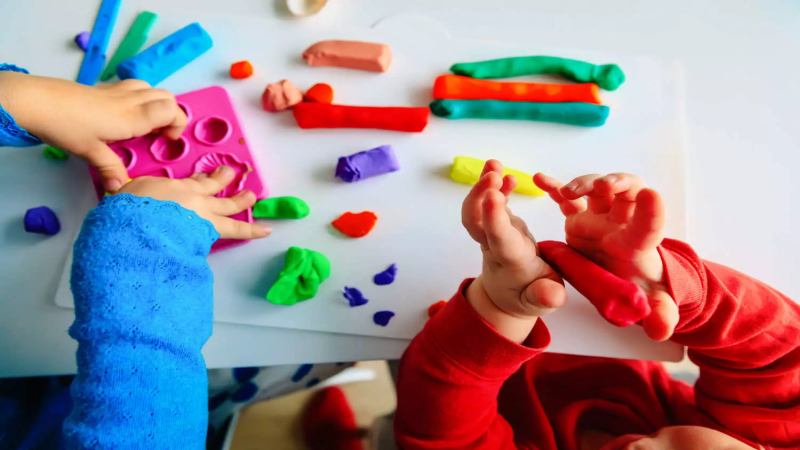
Have you seen those little hands at work? Have you noticed how those tiny hands of your toddlers are ready to grab anything within their reach and explore everything by digging their fingers into them? Playdough is one thing almost all toddlers will love to play with. If you are wondering why you should let your toddler play with playdough, just observe what happens when you let them handle it.
Playdough is the perfect option that lets you get some time away from your toddler as it is bound to keep them busy at least for a few minutes. The squishing, rolling, and molding of the dough into shapes can help strengthen those fingers and keep that active brain occupied for a while (1a). Have you ever wondered if playdough is safe and suitable for your toddler? Then read on to get all your answers.
What is Playdough?
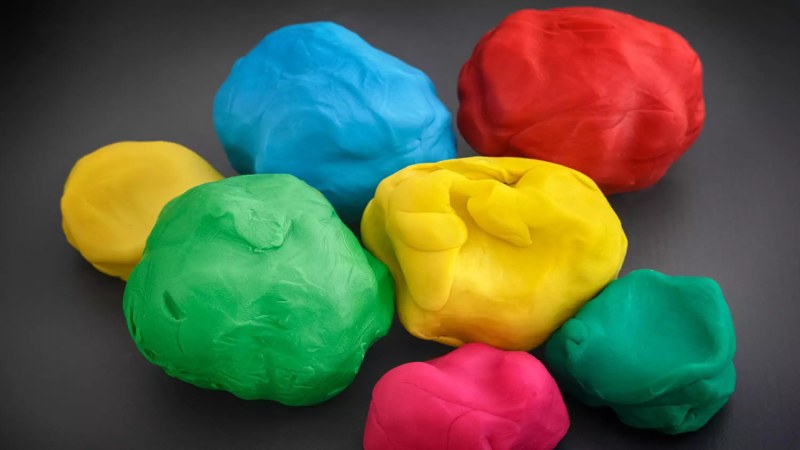
Playdough is a soft substance that looks and feels a lot like clay. It comes in various colors and some have fragrances too. Kids use them to make models, or just play with them like they would play with clay.
Since playdough is a man made substance, it is free of all the dirt and toxins clay or dirt would generally carry. They are also made of a particular consistency that enables toddlers to use them without additional water or any type of liquid to keep them soft and malleable.
Different companies produce playdough under different names. Though the names are different, the purpose and consistency are the same.
When And How to Introduce Playdough to Toddlers?
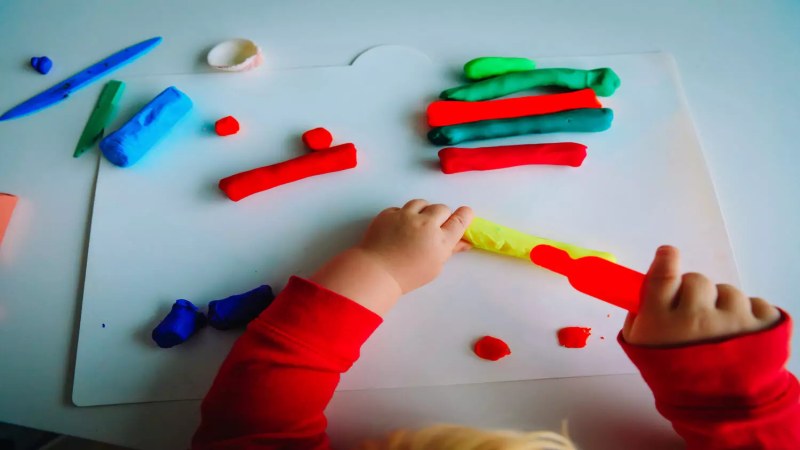
If you check the playdough packs, it shows the recommended age as 3+. So, it is not appropriate for very young toddlers. You may let your toddler over 2 years of age use playdough under your supervision (1b).
Playdough from the stores can be easy to use and access but poses certain risks like any other toy. The harder variants are suitable for older children – mostly 5 years and up. These can not only be harder but can be a choking hazard too.
If your toddler does not show any interest in playdough, you can try giving it to them after a few months. You can try giving them different colors of playdough or molds to use. You can even give them cutters and other tools to use with it.
Different toddlers have different interests. If your toddler does not show interest in creative play, it is okay. Just give them time and let them explore the playdough in their own way. Do not force them to play with it, as it can become counterproductive and create an aversion towards playdough.
Is it Safe For a Toddler to Play With Playdough?
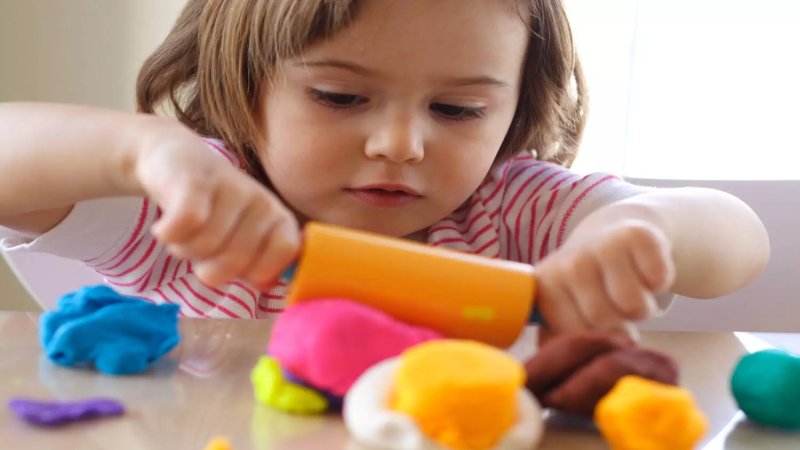
Yes, playdough is perfectly safe for toddlers to play with as long as they don’t mouth them. If your toddler is having allergic reactions to the store-bought playdough, you can try a different brand or make some at home. Here are some tips to ensure safety when your toddler is playing with playdough-
- Ensure they do not put any into their mouth, nostrils, or even ears
- Watch out for allergic reactions and stop them from playing with it, in case of any reactions
- Give your toddler a break after they play with the playdough for a while. Long hours of playing can not only hurt their fingers but can cause an addiction too
- If your toddler still does not understand instructions or follow them, delay introducing playdough for a few more months
- Always watch your toddler when they are playing with playdough. They just need a few seconds to put it into their mouth or nose
Top 8 Benefits of Playing With Playdough
If you are still not sure playdough is the right fit for your toddler, here are some advantages you cannot miss-
1. Helps to Develop Fine Motor Skills
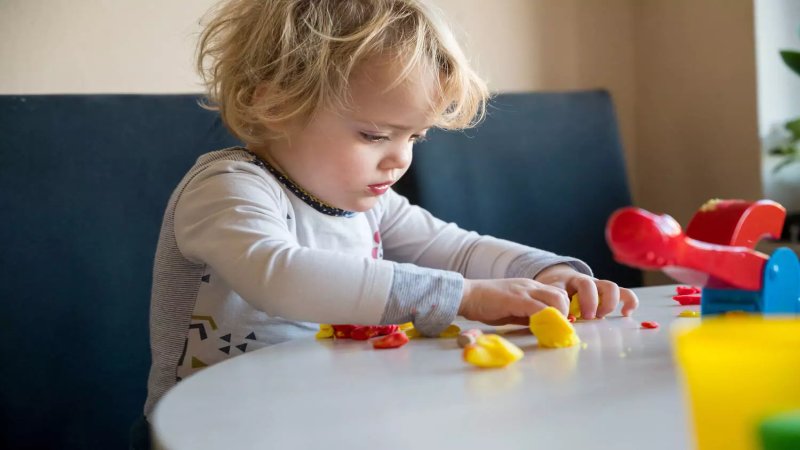
The constant pinching and squishing of the playdough requires your toddler to bend and flex their fingers multiple times. It helps strengthen the fingers and improve their fine motor skills (2).
2. Enhances Hand-Eye Coordination
Making models and shapes with the playdough improves their hand-eye coordination (3). As your toddler progresses to make more complicated shapes using more than one color, the coordination improves.
3. Helps in Emotional Regulation
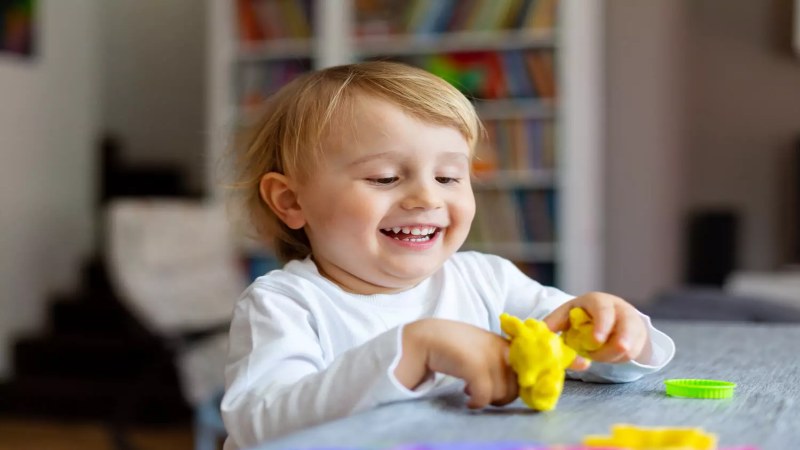
Playdough serves as a sensory play as toddlers get to touch and feel a different texture. Sensorial play helps in emotional regulation (4). When your toddler is anxious, upset, or nervous about seeing new people, they can focus all their emotions on the playdough. It can help calm them down.
4. Encourages Creativity And Imagination
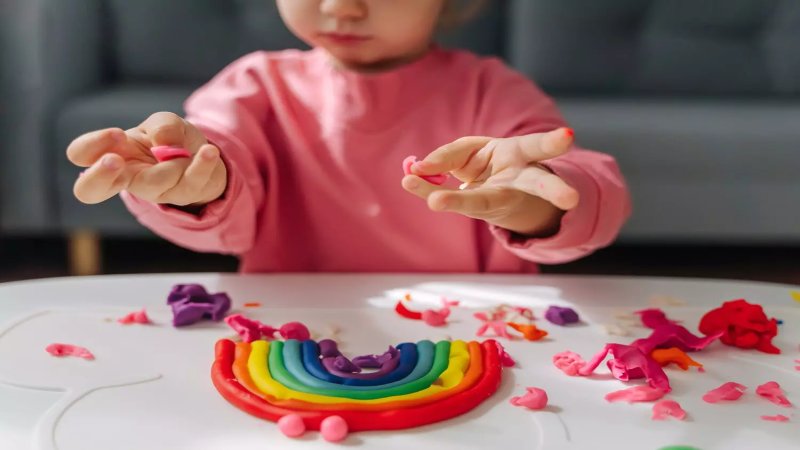
The playdough shaping has no limits. Toddlers can make imaginary shapes or try to recreate some shapes. They can let their imaginations loose and get creative with their modeling (5a).
[Read : Simple, Creative Activities For Toddlers]
5. Improves Social Skills
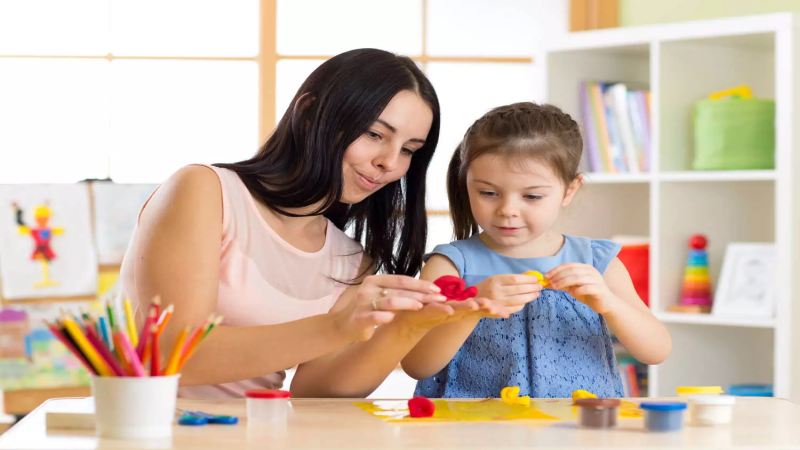
Playing playdough with other toddlers or even adults can improve your toddler’s social skills (6). They will learn to share, communicate, ask for other colors, etc. All these help improve their social interactions through play.
6. Promotes Open-Ended Playtime
Since there is no definite end to playing with playdough, it encourages open-ended playtime (5b). A toddler can play with it for any amount of time. Initially, your toddler might not spend more than a few minutes with their playdough. However, the more the shapes they learn to make or the more imaginative they get, you will see them spending more time with it.
7. Aids in Multi-Sensory Learning
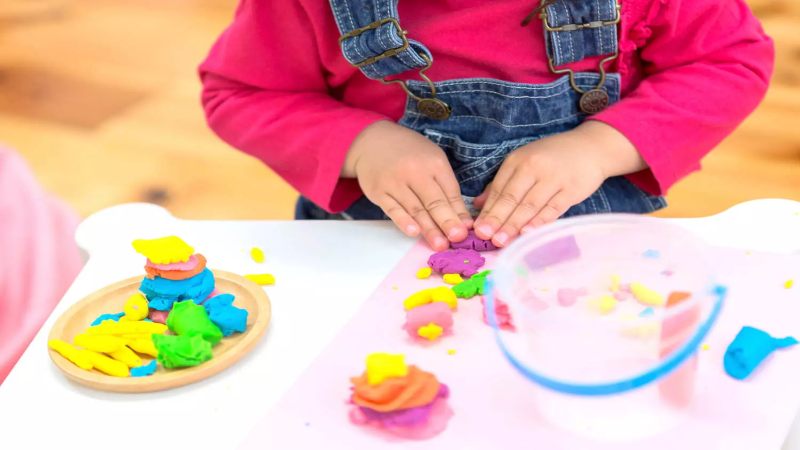
When playing with playdough, toddlers will use their sense of sight, touch, and imagination. They will understand how to shape the material and what will happen when they hold it too tight or too loose. This aids in multi-sensory learning (7). Such lessons are not only interesting but are long-lasting too.
8. Helps Numbers And Vocabulary Development
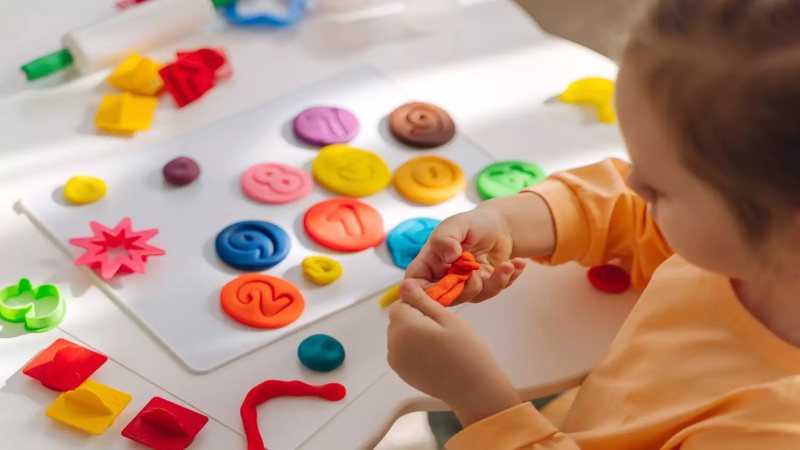
Toddlers can learn to count using playdough shapes. You can roll them into balls and group them by colors, sort by size, etc. It can be an effective way to learn colors, numbers, as well as new words (8).
[Read : Activities and Games For Toddlers to Teach Numbers]
How to Make Homemade Playdough For Your Toddler?
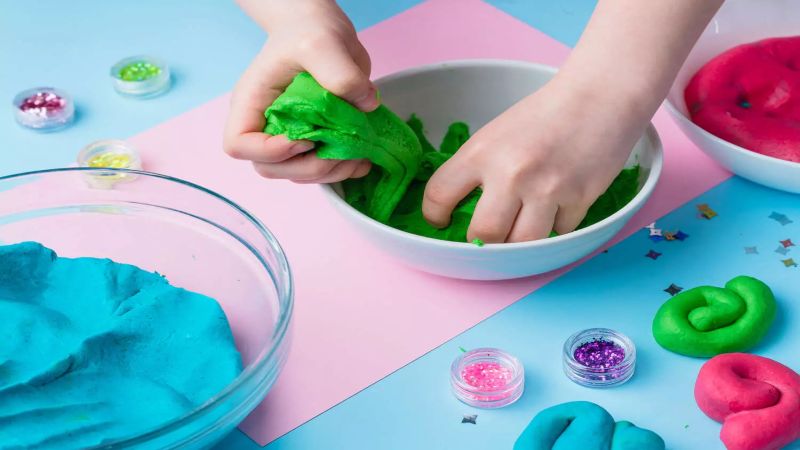
Are you worried about the toxins used in store-made playdough? If you don’t want your toddler playing with the chemicals used in playdough, you can make them yourself at home. Here is a fool-proof recipe you can put together in just a few minutes-
Ingredients
All-purpose flour – 8 Tbsp
Warm water – 60ml
Salt – 2 Tbsp
Vegetable oil – 1 Tbsp
Food coloring – Your choice
How to Make
- Mix the dry ingredients and wet ingredients in 2 separate bowls
- Now add the wet ingredients mixture to the dry ingredients and work the dough
- Knead the dough for a few minutes until soft and lump-free
- Make similar batches using different colors and store them in separate plastic air-tight bags
- Refrigerate it until use, to extend the life of the playdough
- Periodically discard the hard bits of the playdough to ensure your toddler has soft and malleable playdough to use
Playdough is an inexpensive, easily available item for toddlers to play with. It can offer multiple benefits for toddlers of different ages. With a little supervision and some guidance, you can increase the benefits your toddler can get from their interaction with playdough. You can get creative and come up with different activities to do with the playdough. Since it does not involve any screen time, it can be a safe option for kids of different age groups.
FAQ’s
1. When Should Kids Start Playing With Playdough?
Kids can start playing with playdough when they are about 2 years or older. If they understand instructions, are out of the mouthing stage, and show interest in playing with their hands, they are ready to explore playdough.
2. Is Playdough a Sensory Activity?
Yes, playdough encourages a toddler to use their hands and fingers to squish, smash, and roll the playdough. It stimulates their senses, thus making it a sensorial activity.
References
- Written by Jill Mays, January 8, 2014 – https://themotorstory.org/2014/01/08/play-dough-for-hand-strengthening/
- Darizal, Darizal & Sutapa, Panggung & Suhartini, Bernadeta & Sabillah, Muhamad & Annasai, Faza. (2023). The Effect of Playdough Play on Early Childhood Fine Motor Improvement in Yogyakarta National Kindergarten. International Journal of Multidisciplinary Research and Analysis. 06. 10.47191/ijmra/v6-i3-04. – https://shorturl.at/p0w0S
- inkmeo.com – https://www.inkmeo.com/blogs/toddler-development/the-importance-of-hand-eye-coordination
- American Psychological Association (APA) – https://www.apa.org/topics/parenting/emotion-regulation
- Raising Children Network – https://raisingchildren.net.au/toddlers/play-learning/play-toddler-development/imagining-play-toddlers
- United Nations International School of Hanoi (UNIS Hanoi) – https://www.unishanoi.org/about/calendar-news-and-publications/post-default/~board/news/post/social-development-in-early-childhood
- Brightwheel – https://mybrightwheel.com/blog/multisensory-learning
- Negen J, Sarnecka BW. Number-concept acquisition and general vocabulary development. Child Dev. 2012 Nov;83(6):2019-27. doi: 10.1111/j.1467-8624.2012.01815.x. Epub 2012 Jul 16. PMID: 22803603; PMCID: PMC3488126. – https://www.ncbi.nlm.nih.gov/pmc/articles/PMC3488126/
Read Also: Top 10 Easy Sensory Activities for Toddlers
